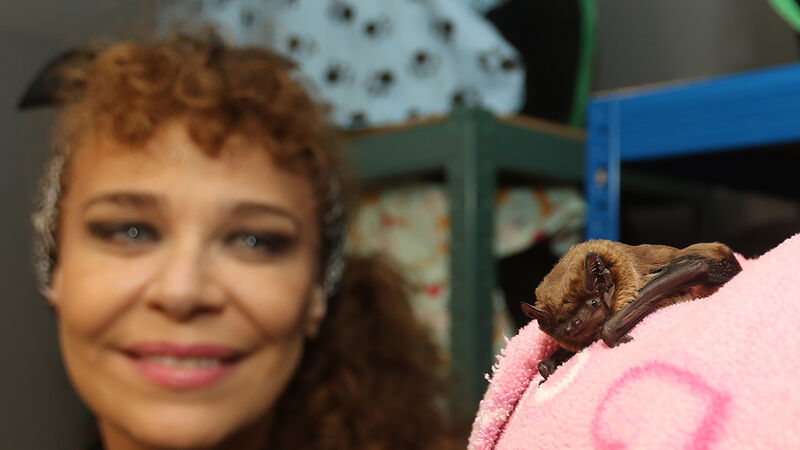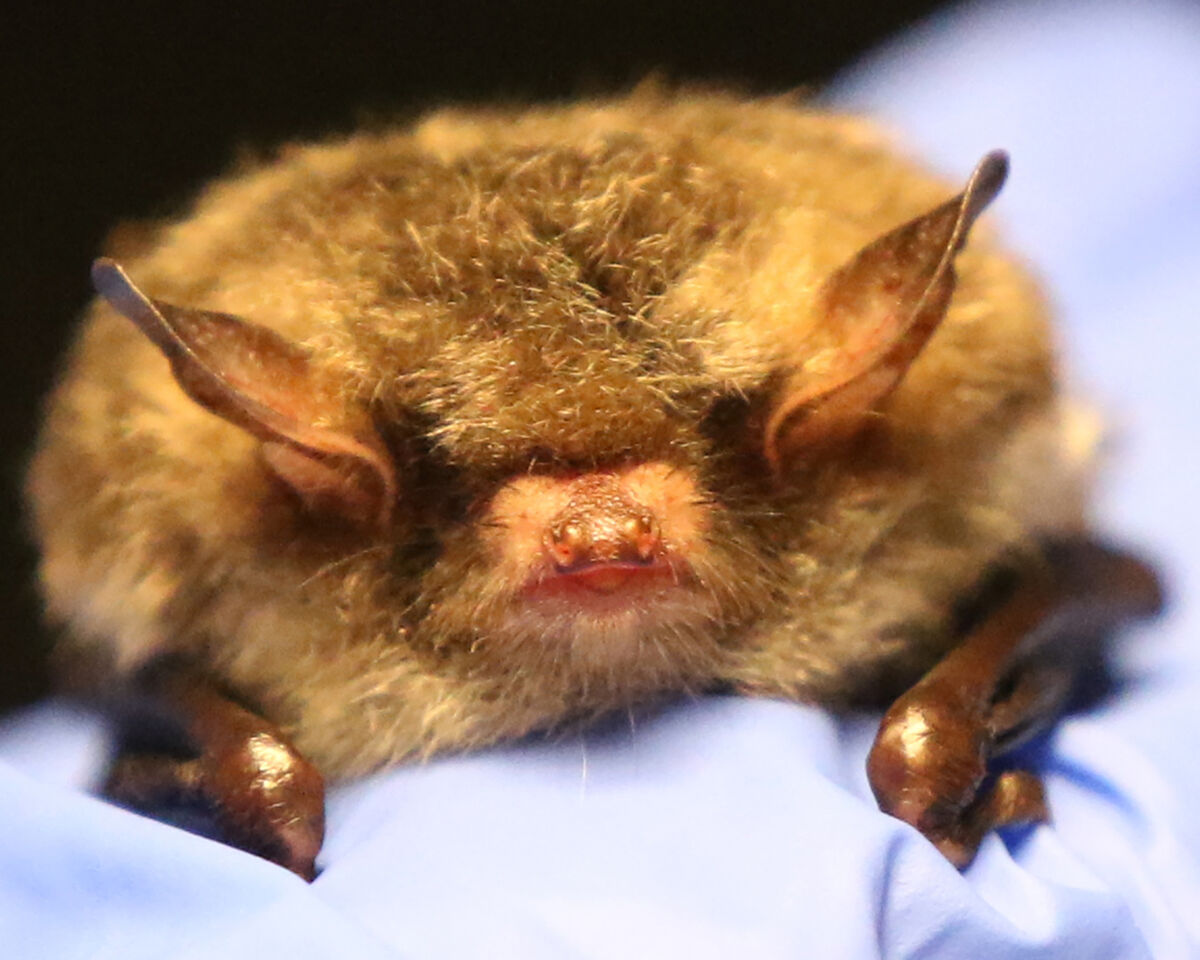Limerick 'hospital' founder takes 34 bats under her wing

Susan Kerwin shows one of her bats at home in Bruree, Co Limerick. Picture: Brendan Gleeson
“What should scare people the most about bats is what would happen if they disappeared,” says Susan Kerwin, the founder of Ireland’s first dedicated ‘Bat Hospital’.
The facility in Bruree, Limerick, which has been in operation for three years, has just received charity status, which will allow it to raise vital funds.
Ms Kerwin has been caring for bats and other wildlife for over a decade.
She currently has 34 bats in her care, as well as barn owls, peregrine falcons and buzzards and expects many more animals over the coming winter months.
Bat Rehabilitation Ireland’s new status as a charity will allow her to run badly needed fundraising to meet the increased costs of caring for the species.
“I’m very proud to be a charity because it just shows all of the work and the commitment that we have put in and that has been recognised. It allows us to fundraise which means we can care for more animals which is what it’s all about,” she said.
Caring for bats is no easy task, and involves a rigorous schedule, especially during the winter months.
When injured bats come to her hospital at this time of the year, they need to be kept awake to heal their wounds until the spring when they would otherwise be hibernating.
While in hibernation, bats reduce their body temperatures from 37C to below 5C which allows them to live off fat stores over the winter. However, this stops their healing process.
Prolonged periods of heat can leave bats grounded and dehydrated which is a common occurrence for Ms Kerwin but cats are the main culprits behind the hospital admissions in Bruree.
"Cats are absolutely obsessed with bats. If a cat can find where bats are emerging from and are accessible to it, they will return every night and will decimate the whole colony in a week. They don't eat them, they just think it's a game," she said.

These bats end up with puncture wounds, torn wings and fractures which require extensive treatment and monitoring.
Ms Kerwin’s love of bats began during a challenging time in her life 15 years ago. A victim of a cancer misdiagnosis, she visited the Mid-Western Regional Hospital in Limerick with complaints of severe bleeding and was told repeatedly that she did not have cancer.
Nine months after initially attending the hospital, Ms Kerwan was diagnosed with cervical cancer at the age of 27 and had to undergo a subsequent hysterectomy and radiotherapy.
She experienced menopause, chronic stress and depression at the time following the treatment and found it almost impossible to sleep.
At this time, she would sit outside late at night and began to notice bats flying around her house.
"It was a time that I got lost in, I became obsessed with them and it was an escape for me from the daily worries and what was going on," she said.
One thing led to another and she began studying the creatures with a bat detector, which allowed her to distinguish one species from another before going on to train in Ireland and in institutions across the world including Florida.
With Halloween around the corner, Ms Kerwin said that people should not fear bats but fear what the world would look like without them.
She says bats promote good health as they reduce the amount of pesticide that farmers need for crops and reduce the costs involved in doing so.

Ireland’s smallest species, the soprano and the common pipistrelle weigh between five and six grammes and eat their body weight in insects each night, according to Ms Kerwin.
“The population of each species is said to be around one million in Ireland, so if you have a million each of them and they’re weighing five to six grammes if you multiply that, that’s over ten tonnes of insects that are being eaten each night by just two of the nine species of bat that we have in Ireland,” she said.
“The impact on our lives as humans and our health is huge,” she said before adding that bats are responsible for pollination and seed dispersal in addition to keeping insect populations under control.
As Ireland is among the least forested country in Europe, they are under threat as bats roost in trees and use hedgerows as pathways to forage for insects, she said.
“What should scare people the most about bats is what would happen if they disappeared.”













